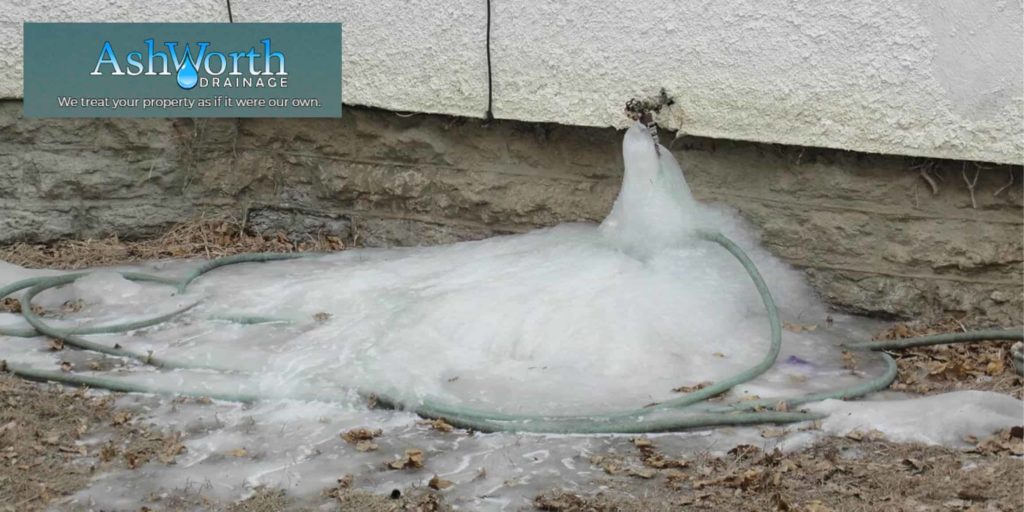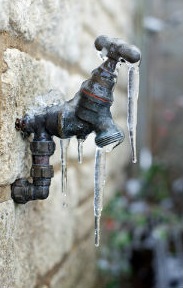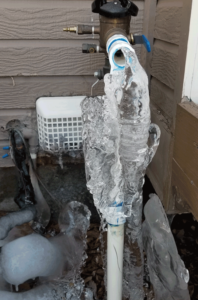How To Drain Outdoor Pipes For Winter

As far as winter prep goes, draining your outdoor pipes is one of the easier tasks, so it’s ironic that it’s also one of the most important. When you drain and shut off the pipes that lead outdoors, you’re not just preventing outside damage – you’ll prevent a lot of potential indoor damage, too!
Prepping Your Outdoor Pipes For Winter
When draining and turning off the outdoor faucets for winter, the hardest thing will be locating where the outdoor pipes begin within your home. It’s a good thing that most modern homes have them start around the same place: usually on your basement ceiling or around the main shutoff valve.
most modern homes have them start around the same place: usually on your basement ceiling or around the main shutoff valve.
Start by walking around the entire outside of your home, noting every outdoor faucet. You’ll need to see where they are to help you trace the supply lines back to their source Disconnect any hoses attached to these faucets, drain the water that might be lingering inside, and store them away.
Head inside, and find each faucet’s shut-off valve. These will be lever valves in the supply line to the faucet, with what’s known as a “bleeder cap” in front of them. Bleeder caps drain excess water in the pipes to prevent standing water and freezing while not in use during the winter. Close these valves to close off the supply to the outdoors. Return to your exterior faucets and open them up. Water will drain out, so use a bucket if the temperatures are already starting to dip.
Return to the lever valves and open up those bleeder caps; this will drain the remaining water out of the pipes. Have a bucket or large cup ready to hold underneath to catch the water. Screw in the bleeder caps again and close off the outdoor faucets. You’re all set to face down Old Man Winter!
Why Drain Your Outdoor Pipes?
 Draining your pipes, while very easy, is absolutely necessary to do before the weather stays below freezing. While the frozen faucets might be outside, the outdoor pipes they rupture will more often than not be inside your walls. If this happens, homeowners could have to deal with litres and litres of water spill out into their basement or foundation walls, damaging both the structural integrity of the foundation and priceless belongings.
Draining your pipes, while very easy, is absolutely necessary to do before the weather stays below freezing. While the frozen faucets might be outside, the outdoor pipes they rupture will more often than not be inside your walls. If this happens, homeowners could have to deal with litres and litres of water spill out into their basement or foundation walls, damaging both the structural integrity of the foundation and priceless belongings.
In older homes, draining the outdoor pipes is still an essential task, but it might be harder to do. Many have not been retrofitted to include the shut-off valves needed to properly close off outside faucets. Don’t worry, though: the standard faucets can easily be replaced with what’s known as “frost-free faucets”. These are made with a special sillcock valve and a vacuum breaker so that you can leave the water on year-round. To see if your home is already fitted with these faucets, look inside the spout: the only thing you should see is a metal “stem”. Regular faucets have the standard valve components that open and close with the turning of the handle. If you don’t have frost-free faucets, you can have them properly installed by a plumber.
If you’d like to tackle the project yourself, grab an insulation kit from your local hardware or home renovation store. These can be installed on the existing faucet before winter; just remember to remove them during the summer. Contact us if you want to know more!
